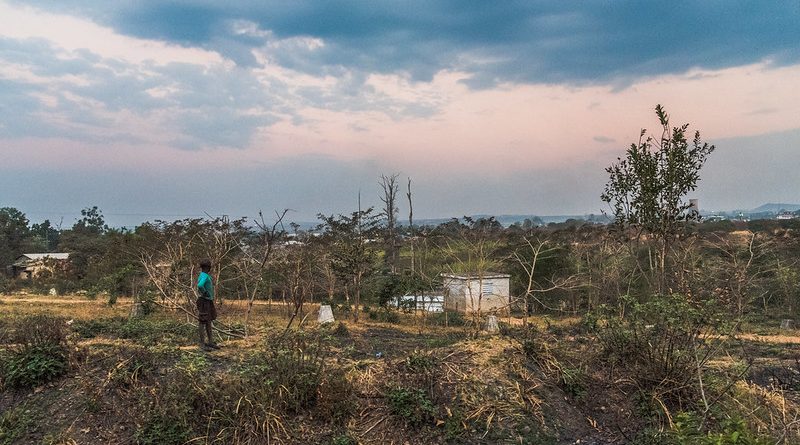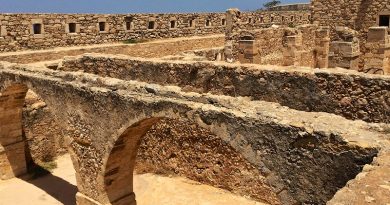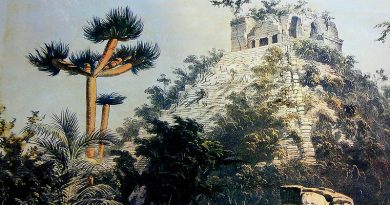Zambia’s Copperbelt
Zambia’s Copperbelt is one of the world’s most concentrated & renowned copper mining areas (120km by 40km) and supports Zambia’s industrial base, accounting for 7% of Zambia’s GDP and 68% of its export earnings and 6% of global copper production . It’s the 11th largest producer in the world
In the late 1960s it was the third largest copper miner, after the US and the Soviet Union. World copper prices collapsed in 1975 with devastating effects on the economy.
Even so, copper accounts for most of Zambia’s foreign earnings and there is optimism about the future of the industry, which was privatised in the 1990s. Electronics manufacturers have fuelled demand and investment in mines has grown.
With the current price of copper , producers are scrambling to invest in the industry.
Zambia’s copper deposits have been exploited since the 6th and 7ht century AD. Copper bracelet and bangles found in the area prove that early iron-age inhabitants mined smelted and traded copper with their neighbours.
The need of metal dictated by World War II between 1914 1918 urged the opening of small mines. After the war the demand for copper increased, fuelled by the expansion of the electrical and automotive industries worldwide.
In 1922 the British South African Company bought all the mining concessions in tribal agreements and started to allocate large prospecting areas for foreign companies, attracting explorations skills from overseas. Between 1930 and 1933 the value of the country’s export increased by 400% leaving copper accounting for 90% of the country’s export by value
You can take a tour of Nkana copper mine in Kitwe, the largest/ deepest in Zambia. Together with the Mufulira mine Nkana’s pruction accounts for almost 30% of Zambia’s total metals output.
Despite the mines unemployment is still a big problem here.They call the region the “wild west” because it is at the crossroads between unstable and troubled Congo and Zambia. There is a large traffic of smuggling every kind of goods such as drugs, diamonds, precious stones. Some cities are like ghost towns, dull and run down, populated by dubious and menacing figures: “dodgy” businessmen, smugglers, bandits and prostitutes.
Despite Chinese investment child labor and serious health and safety issues plague the region.
The Copperbelt is Zambia’s industrial base around Ndola, Kitwe and Chingola. It is one of the world’s most concentrated & renowned copper mining areas (120km by 40km) and, accounting for 7% of Zambia’s GDP and 68% of its export earnings and 6% of global copper production (11th largest producer in the world).
In the late 1960s it was the third largest copper miner, after the US and the Soviet Union. World copper prices collapsed in 1975 with devastating effects on the economy.
Even so, copper accounts for most of Zambia’s foreign earnings and there is optimism about the future of the industry, which was privatised in the 1990s. Electronics manufacturers have fuelled demand and investment in mines has grown.
With the current price of copper just below $8 000 a ton, producers are scrambling to invest in the industry. The Copperbelt in northern Zambia has the potential to produce two million tons of copper a year within the next 10 to 15 years. This would require investment in infrastructure, communications, and mine construction, in excess of $20-billion. This means the Zambian economy could be triple its current size in 20 years time.
Activities:
– take a tour of Nkana copper mine in Kitwe, the largest/ deepest in Zambia. Together with the Mufulira mine Nkana’s pruction accounts for almost 30% of Zambia’s total metals output.
Nchanga Mine
Konkola Copper Mines, one of the biggest open pit mines and the second wettest mine in the world.
The Open Pits at Nchanga Mine, is the largest open pit mine in Africa and 2nd largest open pit in the world”. They are situated in a crescent shaped structure 40km long around the municipal town of Chingola.
Open Pit mining at Nchanga started in 1955, in the main Nchanga Open Pit. Subsequently, nine medium sized open pits, called satellite pits, have also been mined at one time or the other.
At present, mining is concentrated on the main Nchanga pit, with satellite planned for future extensions, as economics and processing technological developments unfold. Together they are termed generically as the Nchanga Open Pits.
Nchanga underground
The Nchanga underground mine accounts for approximately 45% of the total copper production at Nchanga. Over the past 10 years the annual production has averaged 93,00 tonnes of contained copper. Currently, there are three distinct ore bodies from which mining is taking place, namely, the lower ore body (LOB), Block `A’ and Chingola `B’. These contribute 63%, 35% and 8% copper ore production respectively.
Nchanga Process Plants
The Nchanga process plants consist of two concentrators, East mill and West mill and the tailings leach plant.
The east mill treats ore from the open pit while the west mill treats ore from underground. In addition the cobalt is treated at the west mill Cobalt Plant. The tailings leach plant produces copper cathodes from concentrator tailings and reclaimed tailings.
The Nchanga Open Pit, is run by Konkola Copper Mines in Chingola.
Possible stories:
– tour the mine
– talk to one of the higher ups about the copper business in general
– talk about how the copper industry affects the local people and how the mines promote development in the area.



